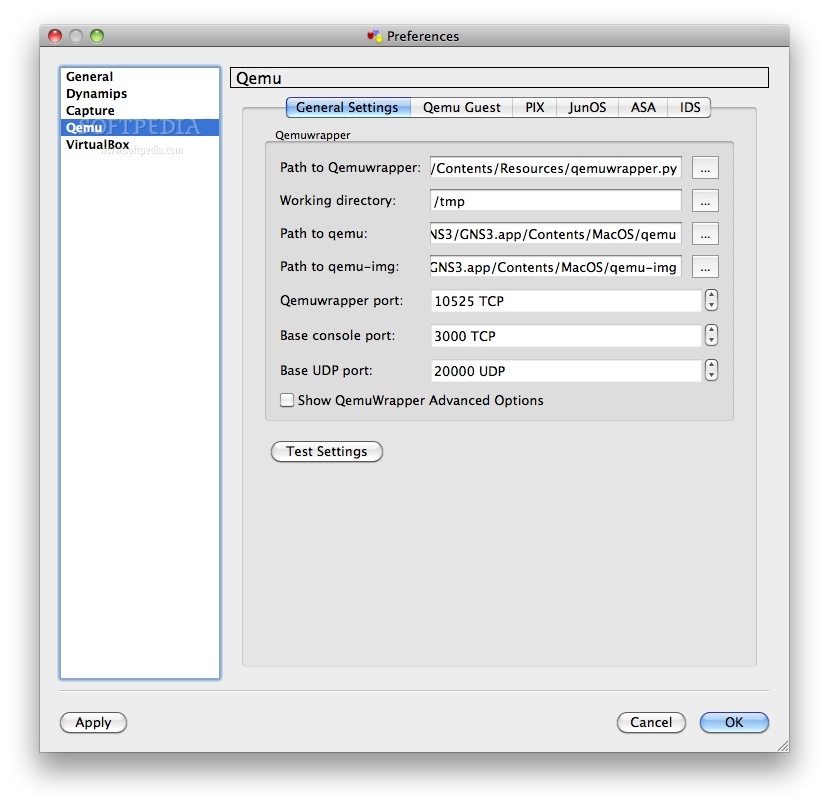
- ONLINE GNS3 SIMULATOR HOW TO
- ONLINE GNS3 SIMULATOR UPDATE
- ONLINE GNS3 SIMULATOR SOFTWARE
- ONLINE GNS3 SIMULATOR CODE
We will briefly show the principles and performance of the EESM-log-SGN, followed by a two-part implementation review using demos. This tutorial discusses the scalability issues with previous error models, and introduces a recent ns-3 error model called EESM-log-SGN, based on link-to-system mapping.
ONLINE GNS3 SIMULATOR HOW TO
Abstract: This tutorial is about how to use MATLAB link-level simulations to generate ns-3 Wi-Fi error models for small-scale, frequency-selective fading channels and the OFDM/OFDMA MIMO/MU-MIMO PHY layer. Presenters: Sian Jin and Tom Henderson (University of Washington). Date/time: Tuesday, JUTC (11am Eastern Daylight Time). ONLINE GNS3 SIMULATOR CODE
How to submit and maintain a module on the App Store, and how to undergo code review for App Store modules.Įfficient PHY Layer Abstraction in ns-3: Principles and Implementation. Checklist of things to cover, including documentation, test coverage, Python bindings, different compilers, etc. ONLINE GNS3 SIMULATOR UPDATE
How to fork ns-3-dev how to create a merge request how to update the Merge Request due to review comments or mainline code changes.ns-3 code contribution guidelines (coding style, license, copyright, documentation, tests).
ONLINE GNS3 SIMULATOR SOFTWARE
Abstract: This tutorial will review the software contribution and review process in ns-3, and provide guidance on how users can submit code to the ns-3 mainline or to the App Store. Presenter: Tom Henderson (University of Washington). Date/time: Tuesday, JUTC (10am Eastern Daylight Time). The result will be self-contained, interactive, easily modifiable and extensible document that can be shared and published directly. In this tutorial we’ll start from scratch and gradually develop a full-fledged analysis exploring the behavior of an example ns-3 program using SEM and Jupyter Notebooks. Using SEM you can quickly run multiple randomized simulations of your ns-3 scenario, exploring the effect the inputs to your program have on network behavior and performance. Abstract: SEM is a Python library whose aim is to make it as easy as possible to run complete simulation campaigns with ns-3. 
Presenter: Davide Magrin (University of Naples Federico II).Date/time: Tuesday, JUTC (9am Eastern Daylight Time).By the end of the session, participants should have a basic understanding of ns3-ai module usage, and how to conduct their ML algorithm evaluation for a network setting using it. Abstract: This tutorial is designed as an introduction to the ns3-ai module intended to enable the testing of ML algorithms within ns-3.Presenters: Hao Yin (University of Washington), Deng Xun and Pengyu Liu (Huazhong University of Science and Technology).
 Date/time: Monday, JUTC (11am Eastern Daylight Time). Machine Learning in ns-3: ns3-ai module, Introduction and Hands-on Example How to extend a POWDER experimental topology with ns-3 emulated nodes. How to use data generated by POWDER experiments in ns-3 models. How to use POWDER nodes and experiments to validate ns-3 models. Creating a basic LTE handover POWDER experiment, and how it relates to an ns-3 LTE simulation. Creating a first POWDER experiment running typical ns-3 simulations. Review of POWDER testbed capabilities, workflows, and terminology. This tutorial will provide some guided examples of how to use ns-3 on POWDER, how to supplement POWDER nodes with ns-3 emulated nodes, and how to use POWDER results and tools to improve or validate ns-3 models. Researchers may want to use ns-3 for certain research projects or phases, and POWDER for different projects or phases, or may want to combine the use of both. POWDER allows users to remotely configure and execute experiments using RF emulators and over-the-air deployments, with software-defined radios, Linux servers, and experimental cellular nodes such as srsLTE and OAI. One such testbed is the POWDER wireless testbed at the University of Utah. National Science Foundation is investing heavily in a number of city-scale advanced wireless testbeds for wireless networking research.
Date/time: Monday, JUTC (11am Eastern Daylight Time). Machine Learning in ns-3: ns3-ai module, Introduction and Hands-on Example How to extend a POWDER experimental topology with ns-3 emulated nodes. How to use data generated by POWDER experiments in ns-3 models. How to use POWDER nodes and experiments to validate ns-3 models. Creating a basic LTE handover POWDER experiment, and how it relates to an ns-3 LTE simulation. Creating a first POWDER experiment running typical ns-3 simulations. Review of POWDER testbed capabilities, workflows, and terminology. This tutorial will provide some guided examples of how to use ns-3 on POWDER, how to supplement POWDER nodes with ns-3 emulated nodes, and how to use POWDER results and tools to improve or validate ns-3 models. Researchers may want to use ns-3 for certain research projects or phases, and POWDER for different projects or phases, or may want to combine the use of both. POWDER allows users to remotely configure and execute experiments using RF emulators and over-the-air deployments, with software-defined radios, Linux servers, and experimental cellular nodes such as srsLTE and OAI. One such testbed is the POWDER wireless testbed at the University of Utah. National Science Foundation is investing heavily in a number of city-scale advanced wireless testbeds for wireless networking research. 
Presenters: Tom Henderson (University of Washington), Alicia Esquivel (University of Missouri).Date/time: Monday, JUTC (9am Eastern Daylight Time).Using ns-3 with the POWDER wireless testbed







 0 kommentar(er)
0 kommentar(er)
